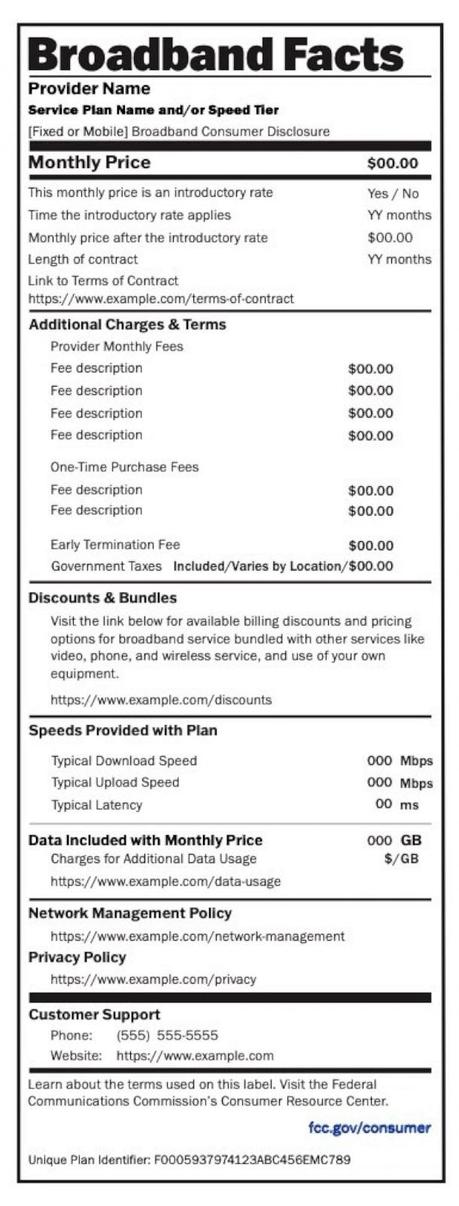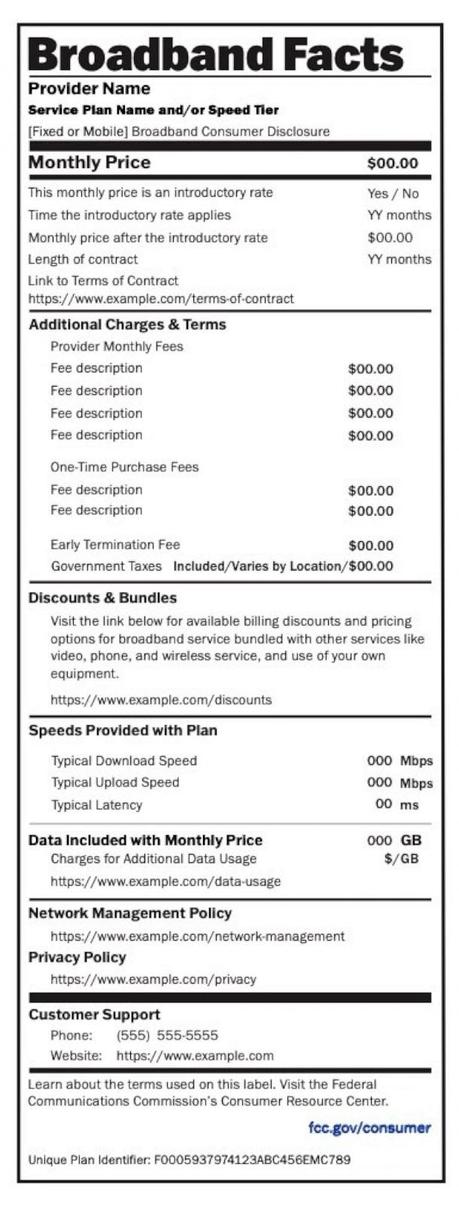From Wednesday, internet users will now have more transparency about their broadband services.
The Federal Communications Commission now requires broadband providers to clearly label all information about the price and performance of their services.
Alejandro Roark, head of the FCC's consumer and government affairs bureau, spoke to ABC News' "Start Here" about the new rule.


ALEJANDRO ROARK: Well, good morning, Brad. I am very happy to be here today. And I think it's important to recognize that the bipartisan infrastructure bill, [and] within that law, Congress directed the FCC to require this [a] broadband provider to display, in the form of labels, specific and important price and performance information related to their Internet subscription.
So anywhere that is considered a point of sale, whether you shop online, on your mobile phone, [or] Whether you are in the store, these must be clearly visible to all consumers.
So they shouldn't be hidden behind some special five clicks that you have to go to, or that make it more difficult, making it confusing to find this information. The rules require these labels to be present at the point of sale and at the point where we compare and prepare to make the choice that best suits our household needs and our long-term budgets.
MORE: Video Proposed return of net neutrality rules
START HERE: What will this label do and what will it look like?ROARK: I think the FCC was wise to borrow the nutrition label template format from food products because we wanted this basic information to be easily recognizable and easy to understand.
START HERE: And just to be clear, it literally looks like the label with the same formatting and shape and all that stuff.ROARK: Exactly. So from today on, consumers will have simple, easy-to-read facts in advance about the price, speed, data limits and other aspects of high-speed internet services.
The story continues
Additionally, by requiring providers to clearly display introductory rates, we're trying to eliminate the unexpected one-time or hidden recurring fees or other unwanted charges that often get buried in long and confusing statements of terms and conditions that lead to - I know that I definitely felt that consumer bill shock when I signed up for a service that would be a really great deal, and then I get my first monthly service [bill] and the prices are completely different.


ROARK: Well Brad, breaking news happens on this podcast. I'm pleased to say that from today, April 10, 2024, broadband providers will be required to display these new broadband power labels at the point of sale. And we'll see all of these wherever Internet services are sold.
START HERE: Is this just by design of it all? Is it just kitsch, or do you think it will have a serious effect? I guess I wonder how big of a problem this is in real life for a lot of people.ROARK: From my perspective, this is a kind of market, a transformative ecosystem tool.
I think what we know right now, in the wake of the global health crisis, is that access to high-quality internet is essential for maintaining important aspects of our daily lives. I'm talking about telemedicine. I'm talking about educational opportunities for students, and I'm talking about our ability to interact with the world and seek out government services - .
Think of all the essential services that have been completely migrated online overnight, and none of these processes, systems or support services are returning in person. They stay online. And it has really forced us all to come face to face with the reality that the Internet is an essential tool for success in the 21st century.


ROARK: So I will say that this particular program, the Emergency Broadband Benefit program, a COVID relief program, was really designed to make sure that everyone, regardless of zip code or economic status, had the opportunity to apply. for the internet service they need.
Again, for basic participation only. The Affordable Connectivity Program has since done more, over the course of the past two years, to bridge the gap between our nation's digital capabilities than any other standalone initiative in our nation's history.
Today, the program serves over 23 million households across all 50 states, territories and federally recognized tribal lands, and the program's success, reach and impact are absolutely undeniable.
But we know, as you said, that without congressional action to provide new funding for the program, the Affordable Connectivity Program is expected to run out of funding by the end of April, potentially leaving millions of households without the internet connections that we are all dependent. on.
Currently, Congress is considering the best way to provide long-term, sustainable funding for the program. But I think right now they're also wondering: what should we do in the meantime? April, the end of April, is just around the corner.
MORE: Biden touts expansion of internet rebate program for low-income households
START HERE: Why can't you impose some of these fees on broadband providers, I guess?ROARK: Yeah. And so I think that's still being negotiated. The Universal Service Program is something that I think has been around for a long time, and there's been a lot of discussion about, can we adapt this program to meet the funding needs of the Affordable Connectivity Program.
And that's something that Congress is currently debating with consumer advocates, and we're at the table to ensure that whatever comes out of that process will meet American consumers wherever they are. And we know that 23 million households are currently enrolled, and many more are eligible to participate in this program.
[
]
The Internet service now comes with "nutrition label"-style pricing information that originally appeared on abcnews.go.com